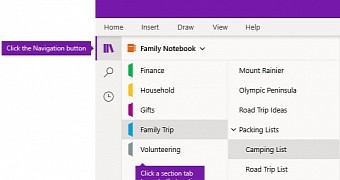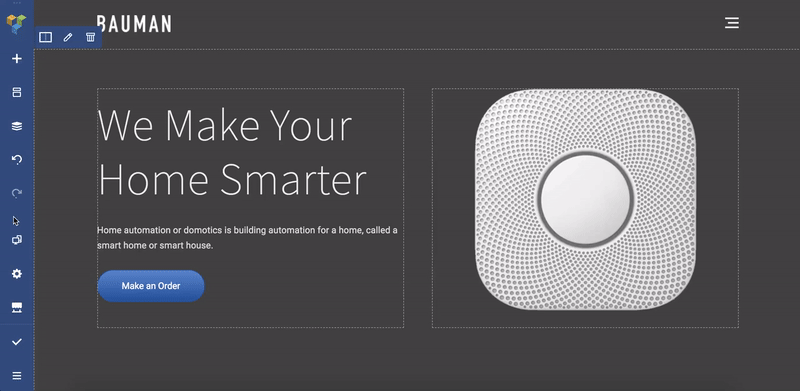Microsoft OneNote with a Microsoft 365 subscription is the latest version of OneNote. Previous versions include OneNote 2016, OneNote 2013, and OneNote 2010. Follow Microsoft 365. Rearrange section tabs Section tabs run across the top of your notebook and are a great way to organize your content by topic or subject area. You can change the order of sections anytime. In the row of sections near the top of the page, drag a tab left.
Microsoft OneNote has evolved to become one key application not only for users around the world, but for Microsoft itself too.
OneNote is now part of the Microsoft Office productivity suite, and what’s more, the Windows 10 version keeps evolving at a pace which shows that the software giant is very committed to continue improving it.
But more recently, Microsoft has also made a change in OneNote that’s not necessarily everyone’s cup of tea. The legacy navigation pane, which let you see all notebooks and pages, has been replaced with a new sidebar that’s less straightforward for a substantial number of users.
Despite aligning with the rest of apps in Windows 10, this sidebar requires additional clicks to browse notebooks, add sections, and manage pages, whereas in the original configuration, everything was so much faster. Somewhat surprising is that Microsoft says it made this change based on user feedback:
“We heard the user feedback and incorporated some new elements to navigation in OneNote for Mac and OneNote for Windows 10. In the updated navigation, switch easily between your notebooks, search results and recent notes using the buttons along the left-hand rail and use the drop-down button across the top of sections and pages to view additional notebooks,” the company said back in March.
“If you want to maximize your canvas, you can hide navigation by clicking the notebooks icon at the top of the left rail. Click the icon again when you need to navigate your way to another page, section or notebook.”
More recently, however, Microsoft has started rolling out a feature for OneNote that comes to resolve this big annoyance, allowing users to actually return to the original approach for the navigation system.
What’s important to know, however, is that this feature is gradually shipping to users, so not everyone sees it right now. It already exists on my device, and you should be getting it rather sooner than later.
My OneNote version is 16001.11901.20096.0.
If you want to return to the old navigation system, launch the app and head over to settings. Scroll down, and in the navigation section, enable the feature that is called “Legacy navigation panes.” In just a few words, here’s the path you need to follow:
OneNote > Menu > Options > Navigation > Legacy navigation panes > On
At the end of the day, it’s actually good news to see Microsoft listening to user feedback, and while some users might like the new UI of the navigation pane, there are others who want to stick with the legacy one.
Somewhat worrying is that Microsoft could at some point remove this option, especially as OneNote would evolve to a more modern approach where the legacy menu would no longer make sense. The company, however, says there’s no reason not to use this new navigation feature:
Onenote For Mac Tabs On Top
“The OneNote app window in the Windows and Mac versions now offers more note-taking space by providing an easier way to control the navigation interface. You can choose to display the notebook, section, and page navigation panes whenever you need them, and then hide them again when you’re done — leaving you to focus on your work, your thoughts, and your ideas,” it says, adding that everything was designed from the very beginning to make more room for your notes.

The same navigation system is also used on OneNote for Mac, and will also go live for OneNote Online and OneNote for iPad for more consistency.
Microsoft has just released a version of OneNote—its note-taking app for capturing, storing, and organizing all kinds of information—for the Mac. The company is positioning OneNote as a competitor to Evernote, and as such the app does offer some compelling features.
One thing that does make OneNote for the Mac particularly notable (pun intended) is that it’s free. (A free iOS version has been available for years.) The free Mac app also includes 7GB of free storage space on Microsoft’s servers. If you have a new Office 365 account, you unlock more storage as well as access to premium features not available with the free version of OneNote.
Flexible placement
OneNote is built around a notebook metaphor. It organizes your data into notebooks, and you can create as many notebooks as you need. Every notebook you create contains sections, which appear as tabs across the top of the notebook’s main screen. Every section contains pages, and pages are where you actually put your data.
So, for example, if you were planning a cross-country summer vacation trip, you could create a Summer Vacation notebook. Within that notebook, you could create separate sections for each state you planned to pass through. And each state section could contain pages for specific sites you planned to visit.
One thing that makes OneNote interesting compared to Evernote is the flexibility it gives you when adding information to a page. Every page in OneNote is freeform, allowing you to add text, images, links to webpages, tables, and other bits of information anywhere you want; you aren’t constrained spatially in the same way you are in a normal word-processing application. Want to add a text note? Click anywhere on the page and start typing, and that’s where your text appears. You can then drag that text where you want it on the page. The same is true of images and tables.
According to Microsoft, there is no limit to either the width or the length of your pages, so it’s conceivable you could create a massive document that stretches in both the X and Y dimensions. This, of course, begs the question, “How do I print my document?” The answer is, you don’t: There is no print option available in the application, although it is possible to export a page as a PDF file and print the resulting file.
Any text you add to the page can be formatted in much the same way you can in Word. You don’t have as many formatting options, but there are plenty enough to help you differentiate your text on the page. The same is true of tables, although I found that the table feature was a bit underdeveloped. While you can format individual cells within tables using a table formatting tool, you can’t perform even the most basic calculations. Furthermore, pasting data from an Excel spreadsheet did not insert that data into the appropriate cells in a OneNote table; it pasted everything into the first cell of the selected cells.
Connecting notes
One thing I really like about OneNote is how easily it allows you to link notebooks and pages together. Secondary-click on a paragraph in your document, for example, and a menu appears offering the option to Copy Link to Paragraph. Pasting this link into your document creates a hyperlink to that paragraph; clicking the link takes you right to that paragraph. This can not only link to items within your current notebook, but also to items in other notebooks you’ve created. It’s a potentially powerful tool for indexing and interlinking anything you’re working on in OneNote.

In my brief experience, OneNote is a bit less successful syncing notes to other platforms. So, for example, the freeform capabilities of the new Mac app spawned some interesting problems in OneNote on other devices. iOS devices had no problem displaying what I’d added to the page. But I couldn’t find a way in the iOS app to move anything on a page I’d created on the Mac.
The Web app was a mess. Anything opened in the OneNote Web application bore no resemblance to its Mac OS and iOS counterparts. Text that was next to an image in the Mac app overlaid the image in the Web app. On the upside, I was able to move anything I wanted to, but what looked well laid out on the Web looked hideous in the Mac app.
There are a few more things I noticed in this brief look that warrant mention. First, there is no obvious way to insert documents from other applications into your OneNote notebook, although it appears from the OneNote webpage that this should be possible.
Likewise, copying a chart created in Excel and pasting it into a OneNote page resulted in nothing at all, even though Microsoft screenshots indicate that this should be possible. Finally, OneNote doesn’t support drag and drop from applications or the Finder, so you can’t drag text from an existing document or a file from the Finder to insert it into OneNote.
Final thoughts
While a full review of the application may reveal more of OneNote’s strengths and weaknesses (including its collaboration tools, Web clipper, and fruits of its partnerships with vendors like Brother, Doxie Go, Epson, Feedly, IFTTT, and Livescribe), overall I’m impressed with it. OneNote’s price, collaboration capabilities, and particularly its freeform note-taking feature make it a compelling application for capturing your ideas as quickly as possible. Whether it’ll be a compelling alternative to Evernote remains to be seen.
Onenote For Mac Tabs Across Tops
Note: When you purchase something after clicking links in our articles, we may earn a small commission. Read ouraffiliate link policyfor more details.
Onenote For Mac Tabs Across Topic

Onenote For Mac Tabs Across Top
- Related: